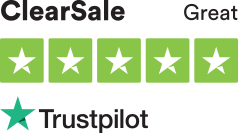In September 2019, Europe’s payment industry witnessed a profound new digital transformation with PSD2. PSD2 was designed to encourage competition among financial providers and enhance consumer protection.
Part of the new directive, SCA is especially important for shop owners because it is required for all electronic transactions in the European Economic Area (EEA). Specifically, it requires the checkout process to include at least two of three authentication factors:
1. Something a customer knows (like a password or a PIN)
2. Something they have (like a mobile device or a token)
3. Something they are (like a fingerprint or facial recognition)
Each factor of SCA must be unique to ensure that, even if one element of an SCA transaction is compromised, the other elements will still be secure. Additionally, each transaction authentication code is dynamically linked to both a transaction amount and payee. If either is changed, the authentication code is invalidated.
SCA applies to all contactless in-person card payments and customer-initiated online payments — including credit card payments and bank transfers — when both the business and the cardholder’s bank are located in the EEA. That means most customer-initiated online transactions within the EEA, transactions using cards issued in the EEA and payments acquired in the EEA.
The good news is SCA should be implemented directly by your payment service providers (PSPs). Ecommerce businesses need to ensure their PSP complies with the SCA requirements.
























